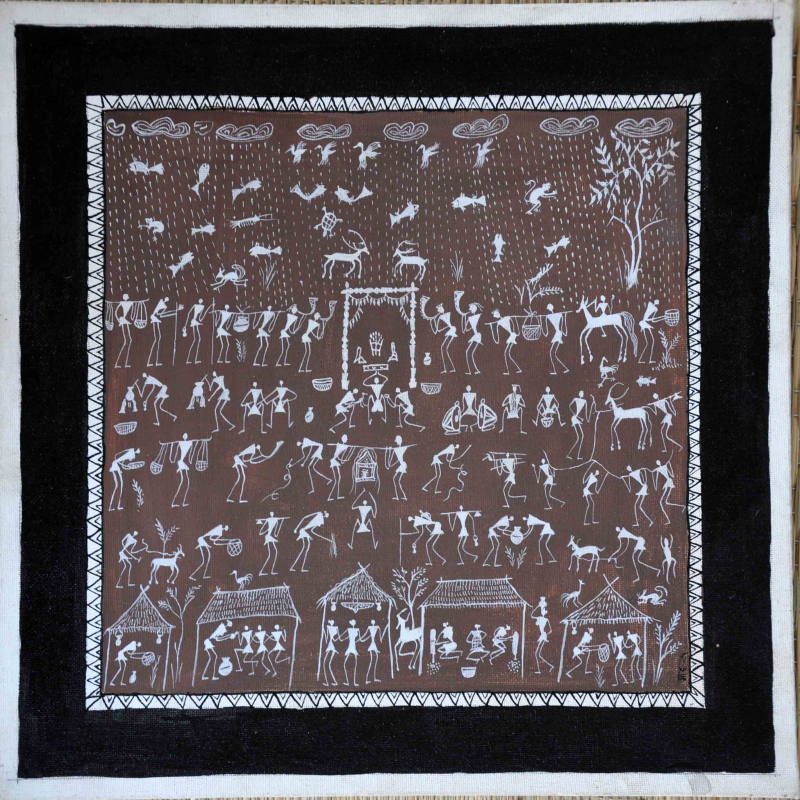Bastar District in Chhattisgarh is home to many tribal groups. None have significant painting traditions. The Gond, Muria and Madia (Maria), the main tribal groups of the area, have a fine tradition of woodcarving but do not have a well-established painting tradition. The Bhatra and Parja tribes decorate the doors, windows and niches of their huts with red and black clay borders, sometimes with rows of red, black and white dots, but that has been the extent of their painting.
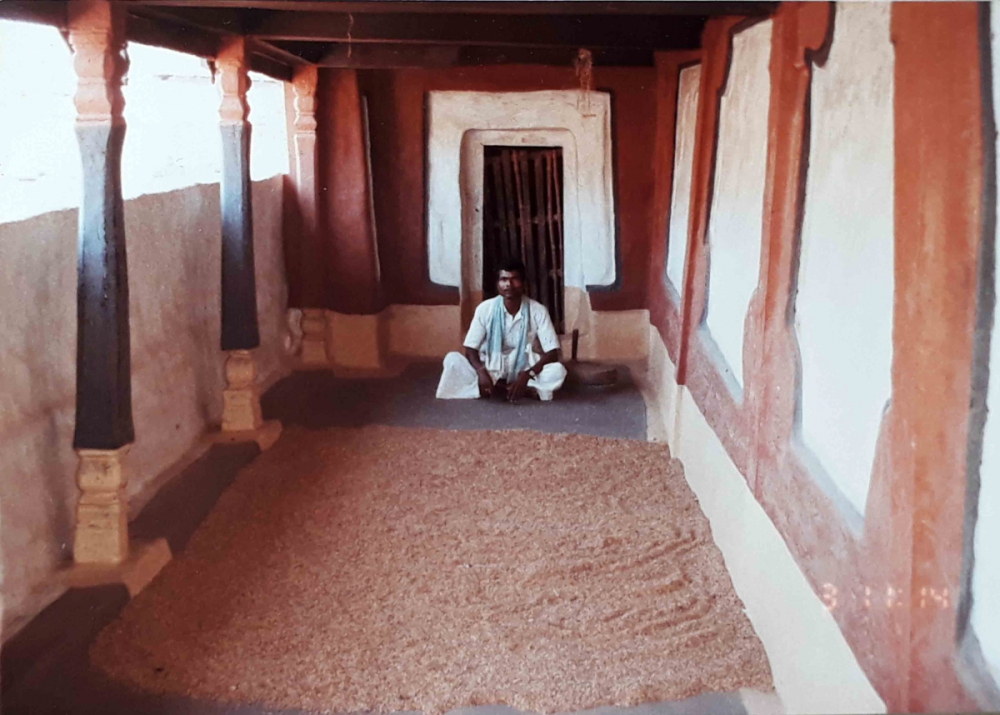
The traditional manner of decorating a wall in a Muria hut
Tribal art expressions of Bastar first came to light in the 1950s with the publication by the British ethnologist, Verrier Elwin, of his book, The Tribal Art of Middle India. But the book had very little information about tribal painting. It was in the work of the well-known photographer, Sunil Janah, who published photographs of Bastar during the 1950s, that the earliest visual references of tribal painting of this area are found. His photographs show some wall decorations with clay relief work depicting animal and bird figures and simple geometrical patterns painted in white clay.
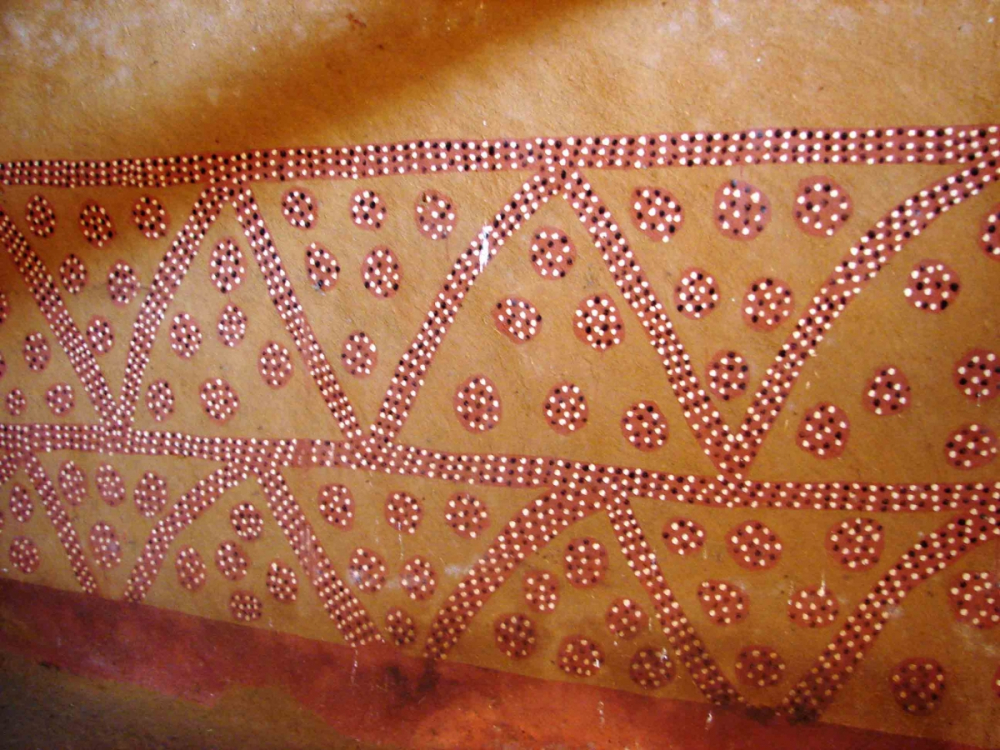
Minimal patterns using dots of white and red clay for adornment of Ghotul and Devgudi walls
After 1970 a different type of painting work had started on the wooden and stone memorial pillars erected by the Madia tribal for their departed ancestors. Soon, plastered brick structures Matth were also created as memorials. These provide a three-dimensional surface for painting to the painters. These memorial are not painted by the tribal but by the carpenters or Lohars, who made them. There is no definite style for these paintings, they are scattered, spontaneous, individual efforts. In the past, there was some sort of order or layout for the motifs to be reproduced but later this was also diluted.
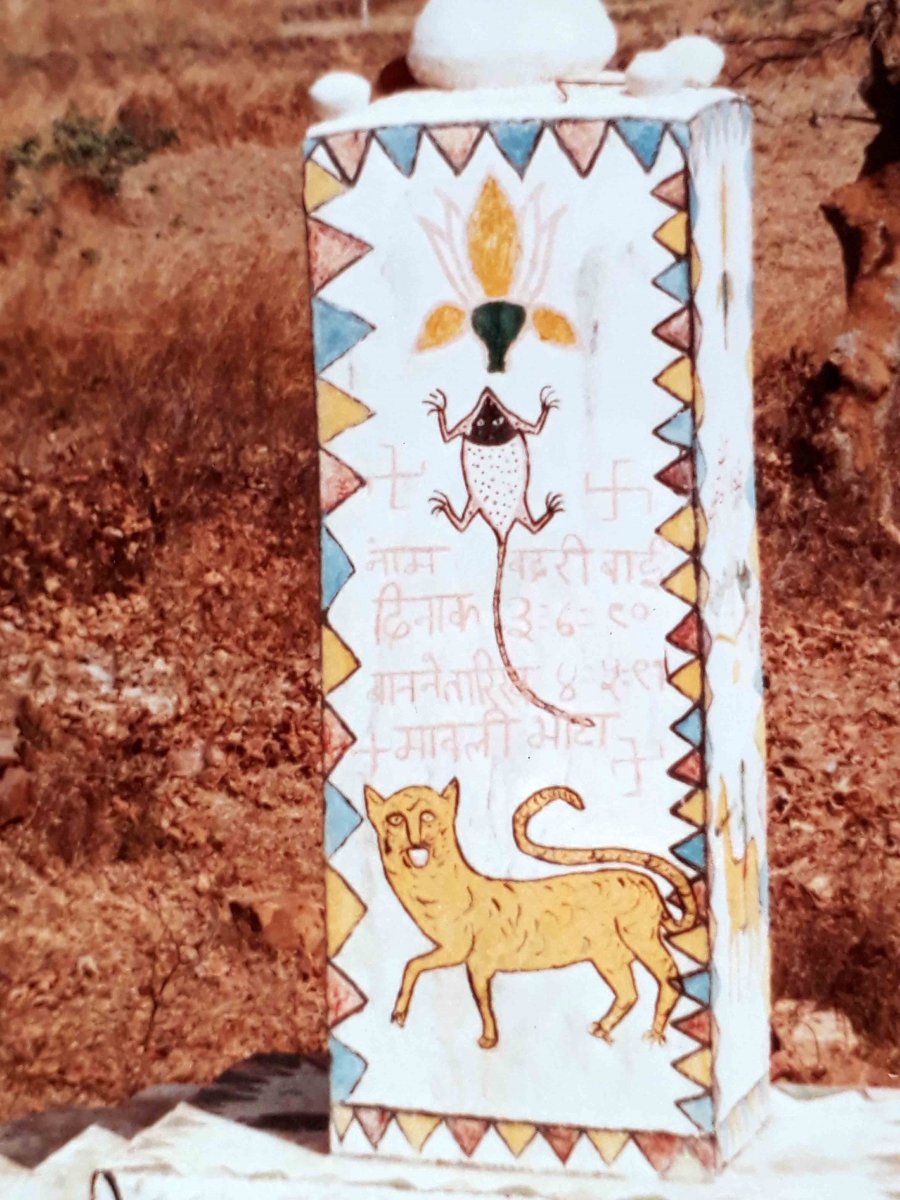
Paintings made with ready-made colour replace relief carvings on Madia memorial pillars
In his book, The Perceiving Fingers (1987) the renowned modern artist, J. Swaminathan, observes, 'The Muria used to make paintings on the walls of their Ghotul, as noticed by Elwin. However, the tradition, if any, has decayed and almost vanished with the decay of the institution of the Ghotul.'
Though the making of paintings on the walls of the Muria Ghotul has been prevalent for a very long time, we do not know who the artists were. The first individually known Muria tribal painters of Bastar were Belgur Muria, Shankar Muria and Pishadu Muria. All three painters were discovered in 1982 when Roopankar, Bharat Bhawan, was established in Bhopal. They were invited to participate in the artist camp organized by Bharat Bhawan and their paintings were displayed in the permanent collection exhibition gallery of the museum. Later, in 1987, their paintings were published in the catalogue of Roopankar, Bharat Bhawan.
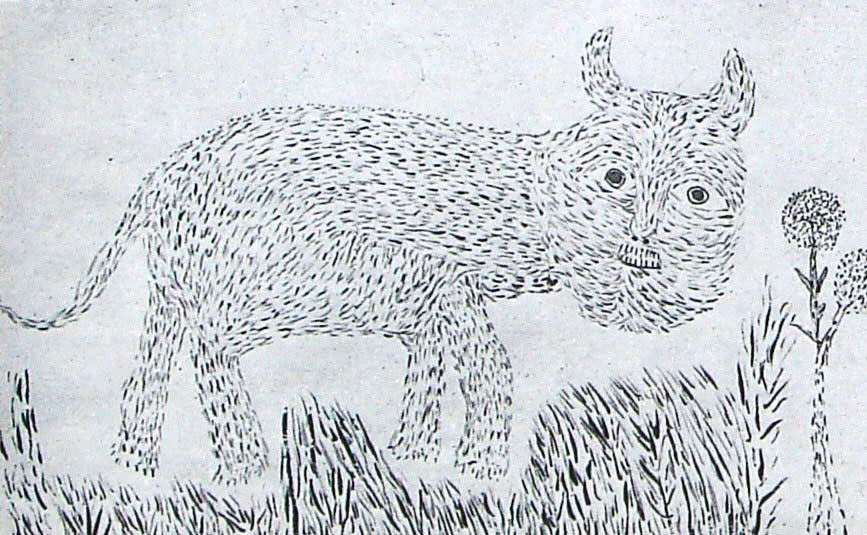
One of the earliest works on paper made by Belgur Muria in 1982
Of these three Muria tribal painters, Shankar and Pishadu gave up painting after some time. Belgur is not a regular painter but is still active and produces the occasional painting when invited for a programme. He was unable to develop sufficiently to sustain himself as a painter.
From around 2010, however, a distinct type of Muria painting began to appear in the urban art market. These paintings are not the traditional or ritual paintings of Muria tribals, but are created by young Muria tribal artists, who paint aspects of their life and culture with a sensibility and aesthetic that is deeply rooted in their traditions. A young painter, Meheru Muria, began painting on paper and canvas, developing a distinct painting style, with various tribal references. His work has come to be recognized in urban art markets as Muria tribal painting of Bastar. At present, a small group of Muria youth is following this painting style and developing it further.
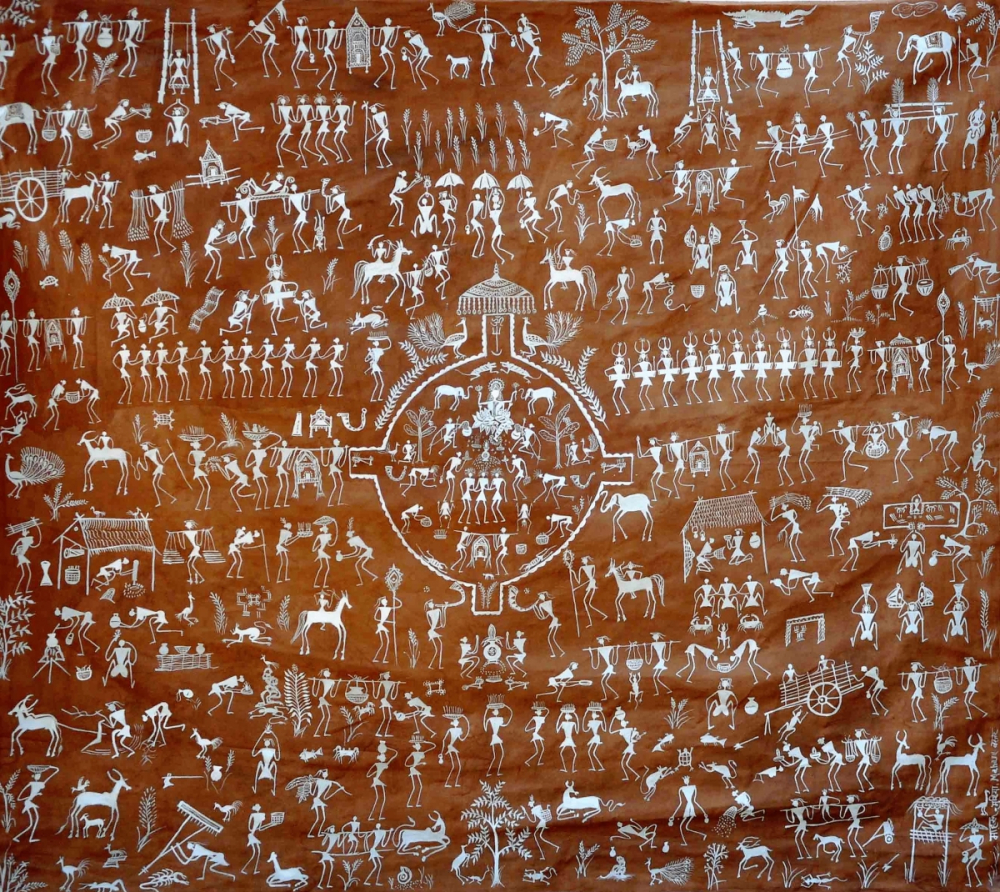
Painting on canvas by Meheru Muria, 2014
Meheru Muria is a young painter, about 32 years of age. He stands out as the first full-time Muria painter who has developed a unique style rooted in his tribal traditions. His paintings on canvas with acrylic colours were first displayed in 2010 at the Jahangir Art Gallery, Mumbai, by TRIFED, in their special tribal painting exhibition ‘Adichitra’, under the category of Muria Painting.
The wall murals he created in 2012 at the Crafts Museum, New Delhi, are a masterpiece and well appreciated by visitors. Painted in black on a yellow ochre background, they depict the tribal life of Bastar—village scenes with figures of men and women, birds, animals, trees and huts, alongside activities like hunting, worship at a shrine, a Dussehra procession, devotees carrying different types of mobile shrines (Doli, Anga, Laat, Kanta Khurchi), dancing groups, drummers, hunting traps etc.
What is surprising is that these paintings were made by two artists, Meheru and Vinod Muria, but it is difficult to discern any stylistic difference. It is interesting also that the painting immediately puts one in mind of the iron craft of Bastar, as the lines closely resemble the sculptural figures.
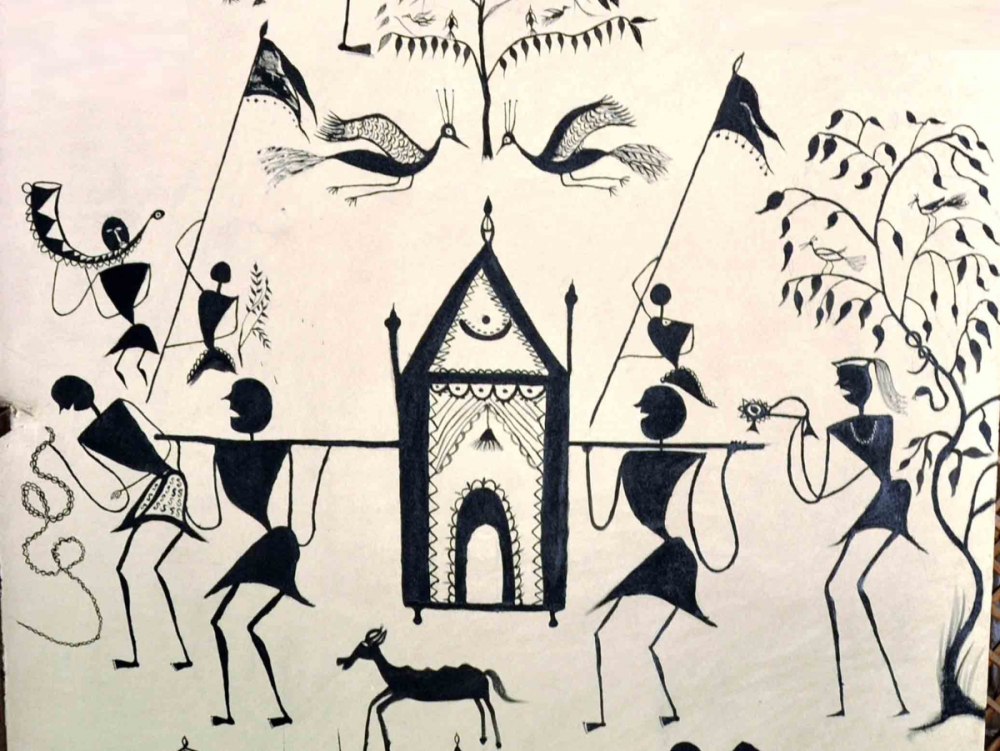
Mural painting by Mehru Muria using acrylic color, 2014
Meheru has said that in developing his own style, he must have been inspired subconsciously by the human and animal figures created by the iron craftsmen, the Lohars of Kondagaon. He remembered that when he was learning metal casting at a workshop in Kondagaon, some Lohars were also working there. They made grills and lamps with birds, animals and human figures in various activities and postures. In this workshop, Meheru sat in a particular spot where the direction he faced had bright sunlight streaming in through the door, which made the solid black iron figures look extremely attractive to him.
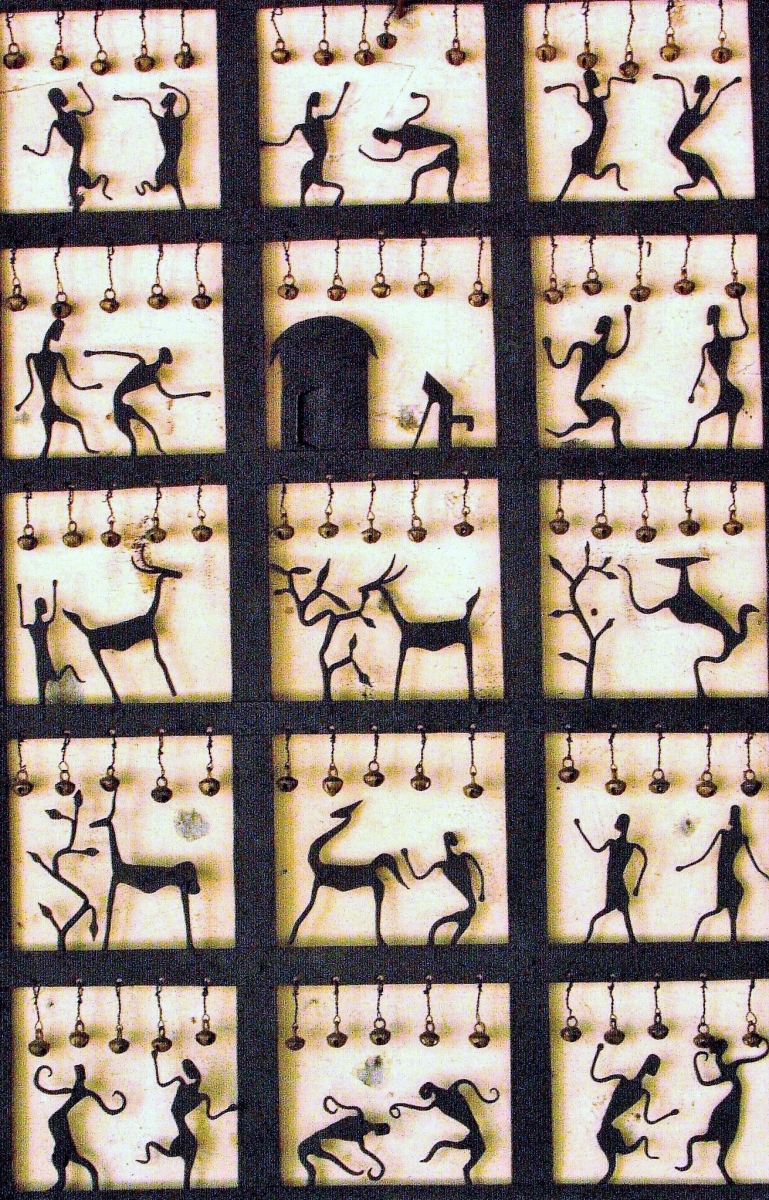
Iron work by Bastar Lohar community that inspired Meheru Muria’s figurative style
He said those figures were deeply set in his heart and when he painted they automatically appeared in his painting. His figures definitely have a stylistic similarity with the iron work of Bastar but he says he has never copied them intentionally. Meheru says he loves the colour black and and his tribal culture which is in his blood. He paints only the cultural life of the Muria tribals of Bastar.
During 2013 Meheru Muria was invited to Uttarain Museum, Baroda, Gujarat, to make a wall painting. His paintings at Uttarain Museum look like an extension of the mural at the Crafts Museum, New Delhi. He has painted an overview scene of the Dussera festival of Bastar, with all kinds of activities that are done on the occasion. The Dussera festival seems to be deeply embedded in his consciousness.
The year 2010 was the turning point in Meheru’s career as a painter. His paintings were recognized at the national level and his style of painting was given a name representing his Muria tribal community.
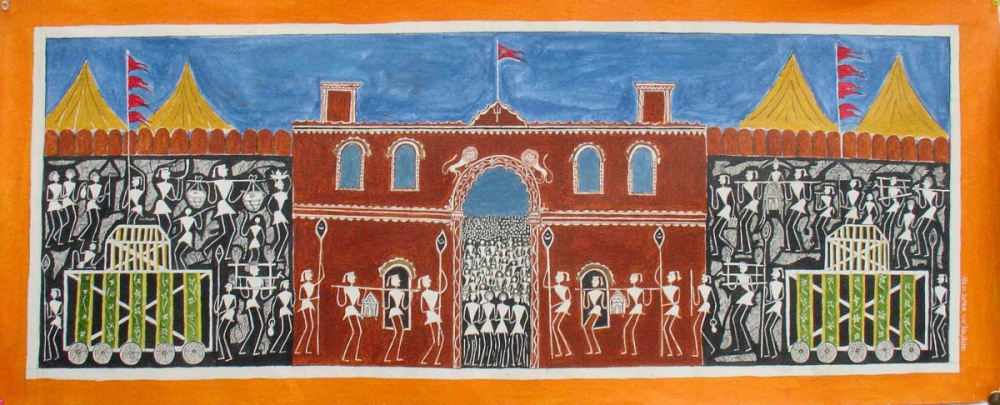
Acrylic on canvas, Mehru Muria, 2009
Meheru says it is very difficult to survive only on his painting work, because it is not something that is in demand locally. For his own community these paintings are nothing more than a commodity, selling which they can earn some money. Encouraged by the earnings Meheru is able to make, some young Muria boys and girls have started learning painting from him. Sagram Markam and Vinod Muria who learnt this art from him are now painting independently. Narain Koram. Budhram Markam, Santosh Sori, and Sarita Mandavi—all Muria—are still at the learning stage. They are all painting in the style of Meheru.
After the continuous hard work of 10 years, Meheru Muria is a popular and respected Muria painter of India. After Jangarh Singh Shyam, the great Gond painter, Meheru is another tribal painter whose individual painting style, rooted in the traditions and culture of his community, and now named after it, has made him famous. A market has developed for these paintings. And it this market that is attracting other youth of the community to adopt painting as a way of earning a livelihood.
This content has been created as part of a project commissioned by the Directorate of Culture and Archaeology, Government of Chhattisgarh, to document the cultural and natural heritage of the state of Chhattisgarh.
